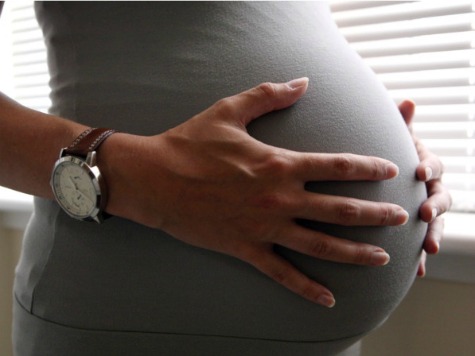
Doctors at CHA Hollywood Presbyterian Medical Center in Los Angeles performed heart surgery on a 25-week old unborn baby to open up a narrow aortic valve.
The Los Angeles Times reported that after practicing with a model of jello and a grape – with the grape standing in for the tiny heart and the jello representing the surrounding body – the doctors performed the procedure on September 25th using a wire the width of a hair, a balloon a few millimeters wide, and a needle measuring 11 centimeters exactly.
The procedure, known as fetal aortic valvuloplasty, was the first ever performed in Southern California.
The ultrasound video below shows a portion of the surgery in which the surgeon is manipulating a needle through the baby’s heart, and stopping when it is directed toward the narrow aortic valve.
Fetal cardiologist Dr. Jay Pruetz of Children’s Hospital Los Angeles diagnosed the unborn baby as having severe aortic stenosis, a condition in which the aortic valve is very tight. Blood had been backing up in the left ventricle of the baby’s heart, keeping it from pumping normally.
Without surgery, the left ventricle would not develop properly, and the baby would most likely be born with a life-threatening condition called hypoplastic left heart syndrome (HLHS).
For the surgery, the mother received local anesthesia and sedation. The baby was also given anesthesia and a muscle relaxant so that it would not abruptly switch positions.
According to the Times, Dr. Ramen Chmait, assistant professor at Keck School of Medicine of USC and director of Los Angeles Fetal Therapy, inserted a thin metal tube through the mother’s belly into the uterus, through the amniotic cavity, and into the baby’s chest.
When the needle was placed correctly, pediatric interventional cardiologist Frank Ing of CHLA threaded a thin wire just 14/1000s of an inch down through the needle to serve as a rail to push a tiny balloon that inflated to 3.25 millimeters wide across the aortic valve.
Attached to a catheter, the balloon was carefully inflated with a premeasured amount of liquid as it then stretched and even tore a small part of the aortic valve, permitting more blood to flow to the baby’s heart.
A few weeks after the surgery, Drs. Ing and Chmait report that both mother and baby are doing well.
“It’s only been a week or two, but even initially after the procedure, we could see increased blood flow across the valve, and the heart was squeezing a bit better than before,” said Dr. Pruetz.
“There is no question in my mind that, without this procedure, the baby would have had HLHS,” said Dr. Chmait. “Now the baby has a chance to have the left ventricle recover with some good function.”

COMMENTS
Please let us know if you're having issues with commenting.